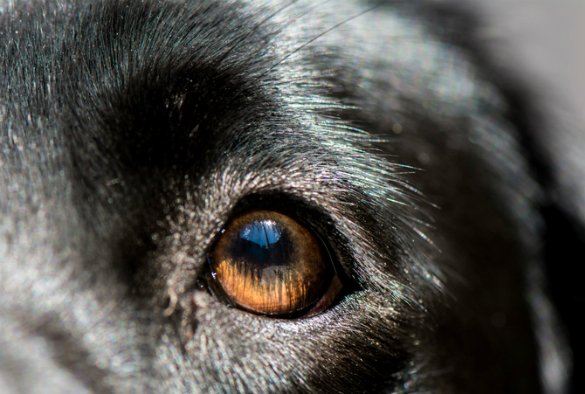
A parasitic worm that is becoming increasingly common in Europe poses a significant threat to UK dogs, warn experts in the Veterinary Record today.
A research team, led by Dr John Graham-Brown at the University’s Institute of Infection and Global Health, describe three cases in UK dogs with recent history of travel to mainland Europe.
They call for vigilance when examining travelled dogs and warn that other animals – and people – should also be considered at risk of infection when travelling to areas where the parasite is endemic.
Thelazia callipaeda is a parasitic worm capable of infecting a range of mammalian host species including dogs, cats and human beings. The worm is found in a species of fruit fly known to be present in the UK. The researchers believe the introduction of this species is a potential risk.
Adult worms live in the eyes and associated tissues. Infected animals show a variety of symptoms, from mild conjunctivitis to severe corneal ulceration which, if untreated, can lead to blindness.
In July 2016, the team described the first known case of eyeworm infection in the UK in a dog recently imported from Romania. Now, they have confirmed their initial diagnosis and report a further two cases in dogs with recent history of travel to Italy and France.
In all three cases, all requirements specified under the UK government’s pet travel scheme (PETS) were met before and during travel.
All three dogs received treatment and made a full recovery. But the authors warn that, given the relatively free and regular movement of dogs into and out of the UK from mainland Europe and importation from rescue charities under this scheme, this and other pathogens pose a significant threat to the UK canine population.
These three cases “demonstrate the risk of introducing T.callipaeda to the UK through dogs being imported from and travelling to geographical locations where T.callipaeda is known to be endemic,” the researchers say.
“Furthermore, since T callipaeda is zoonotic and capable of infecting several other mammalian species, both people and cats should also be considered at risk of infection when travelling to such areas,” they add.
“Although effective diagnostic tests and treatments are available, more can and should be done to prevent this zoonotic pathogen from becoming endemic in the UK,” they conclude.
The paper ‘Three cases of imported eyeworm infection in dogs: a new threat for the United Kingdom’ is published in the Veterinary Record [doi 10.1136/vr.104378]